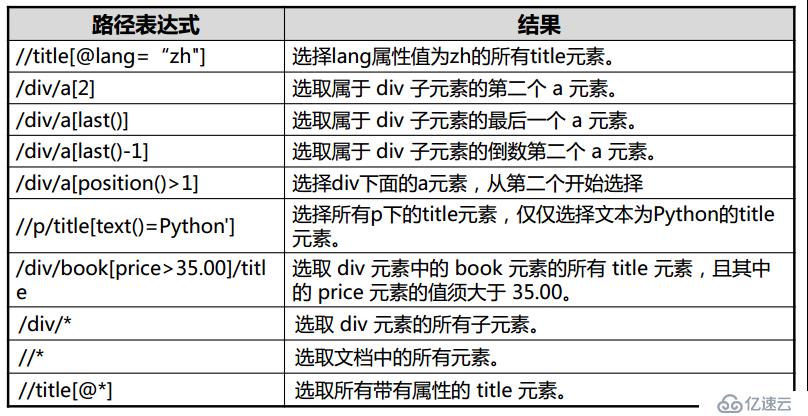1.在终端输入scrapy命令可以查看可用命令 Usage: scrapy <command> [options] [args] Available commands: bench Run quick benchmark test fetch Fetch a URL using the Scrapy downloader genspider Generate new spider using pre-defined templates runspider Run a self-contained spider (without creating a project) settings Get settings values shell Interactive scraping console startproject Create new project version Print Scrapy version view Open URL in browser, as seen by Scrapyscrapy架构

爬虫概念流程
概念:亦可以称为网络蜘蛛或网络机器人,是一个模拟浏览器请求网站行为的程序,可以自动请求网页,把数据抓取下来,然后使用一定规则提取有价值的数据。
基本流程:
发起请求-->获取响应内容-->解析内容-->保存处理


import scrapy class DoubanItem(scrapy.Item): #序号 serial_number=scrapy.Field() #名称 movie_name=scrapy.Field() #介绍 introduce=scrapy.Field() #星级 star=scrapy.Field() #评论 evalute=scrapy.Field() #描述 desc=scrapy.Field()3.编写Spider文件,爬虫主要是该文件实现
进到根目录,执行命令:scrapy genspider spider_name "domains" : spider_name为爬虫名称唯一,"domains",指定爬取域范围,即可创建spider文件,当然这个文件可以自己手动创建。
进程scrapy.Spider类,里面的方法可以覆盖。
import scrapy from ..items import DoubanItem class DoubanSpider(scrapy.Spider): name='douban_mv' allowed_domains=['movie.douban.com'] start_urls=['https://movie.douban.com/top250'] def parse(self, response): movie_list=response.xpath("//div[@class='article']//ol[@class='grid_view']//li//div[@class='item']") for movie in movie_list: items=DoubanItem() items['serial_number']=movie.xpath('.//div[@class="pic"]/em/text()').extract_first() items['movie_name']=movie.xpath('.//div[@class="hd"]/a/span/text()').extract_first() introduce=movie.xpath('.//div[@class="bd"]/p/text()').extract() items['introduce']=";".join(introduce).replace(' ','').replace('\n','').strip(';') items['star']=movie.xpath('.//div[@class="star"]/span[@class="rating_num"]/text()').extract_first() items['evalute']=movie.xpath('.//div[@class="star"]/span[4]/text()').extract_first() items['desc']=movie.xpath('.//p[@class="quote"]/span[@class="inq"]/text()').extract_first() yield items "next-page"实现翻页操作 link=response.xpath('//span[@class="next"]/link/@href').extract_first() if link: yield response.follow(link,callback=self.parse) 4.编写pipelines.py文件
清理html数据、验证爬虫数据,去重并丢弃,文件保存csv,json,db.,每个item pipeline组件生效需要在setting中开启才生效,且要调用process_item(self,item,spider)方法。
open_spider(self,spider) :当spider被开启时,这个方法被调用
close_spider(self, spider) :当spider被关闭时,这个方法被调用
# -*- coding: utf-8 -*- # Define your item pipelines here # Don't forget to add your pipeline to the ITEM_PIPELINES setting # See: https://doc.scrapy.org/en/latest/topics/item-pipeline.html import json import csv class TutorialPipeline(object): def open_spider(self,spider): pass def __init__(self): self.file=open('item.json','w',encoding='utf-8') def process_item(self, item, spider): line=json.dumps(dict(item),ensure_ascii=False)+"\n" self.file.write(line) return item class DoubanPipeline(object): def open_spider(self,spider): self.csv_file=open('movies.csv','w',encoding='utf8',newline='') self.writer=csv.writer(self.csv_file) self.writer.writerow(["serial_number","movie_name","introduce","star","evalute","desc"]) def process_item(self,item,spider): self.writer.writerow([v for v in item.values()]) def close_spider(self,spider): self.csv_file.close()5.开始运行爬虫
scrapy crawl "spider_name" 即可爬取在terminal中显示信息,注spider_name为spider文件中name名称。
在命令行也可以直接输出文件并保存,步骤4可以不开启:
scrapy crawl demoz -o items.json scrapy crawl itcast -o teachers.csv scrapy crawl itcast -o teachers.xmlscrapy常用设置
修改配置文件:setting.py
每个pipeline后面有一个数值,这个数组的范围是0-1000,这个数值确定了他们的运行顺序,数字越小越优先
DEPTH_LIMIT :爬取网站最大允许的深度(depth)值。如果为0,则没有限制
FEED_EXPORT_ENCODING = 'utf-8' 设置编码
DOWNLOAD_DELAY=1:防止过于频繁,误认为爬虫
USAGE_AGENT:设置代理
LOG_LEVEL = 'INFO':设置日志级别,资源
COOKIES_ENABLED = False:禁止cookie
CONCURRENT_REQUESTS = 32:并发数量
设置请求头:DEFAULT_REQUEST_HEADERS={...}


免责声明:本站发布的内容(图片、视频和文字)以原创、转载和分享为主,文章观点不代表本网站立场,如果涉及侵权请联系站长邮箱:is@yisu.com进行举报,并提供相关证据,一经查实,将立刻删除涉嫌侵权内容。